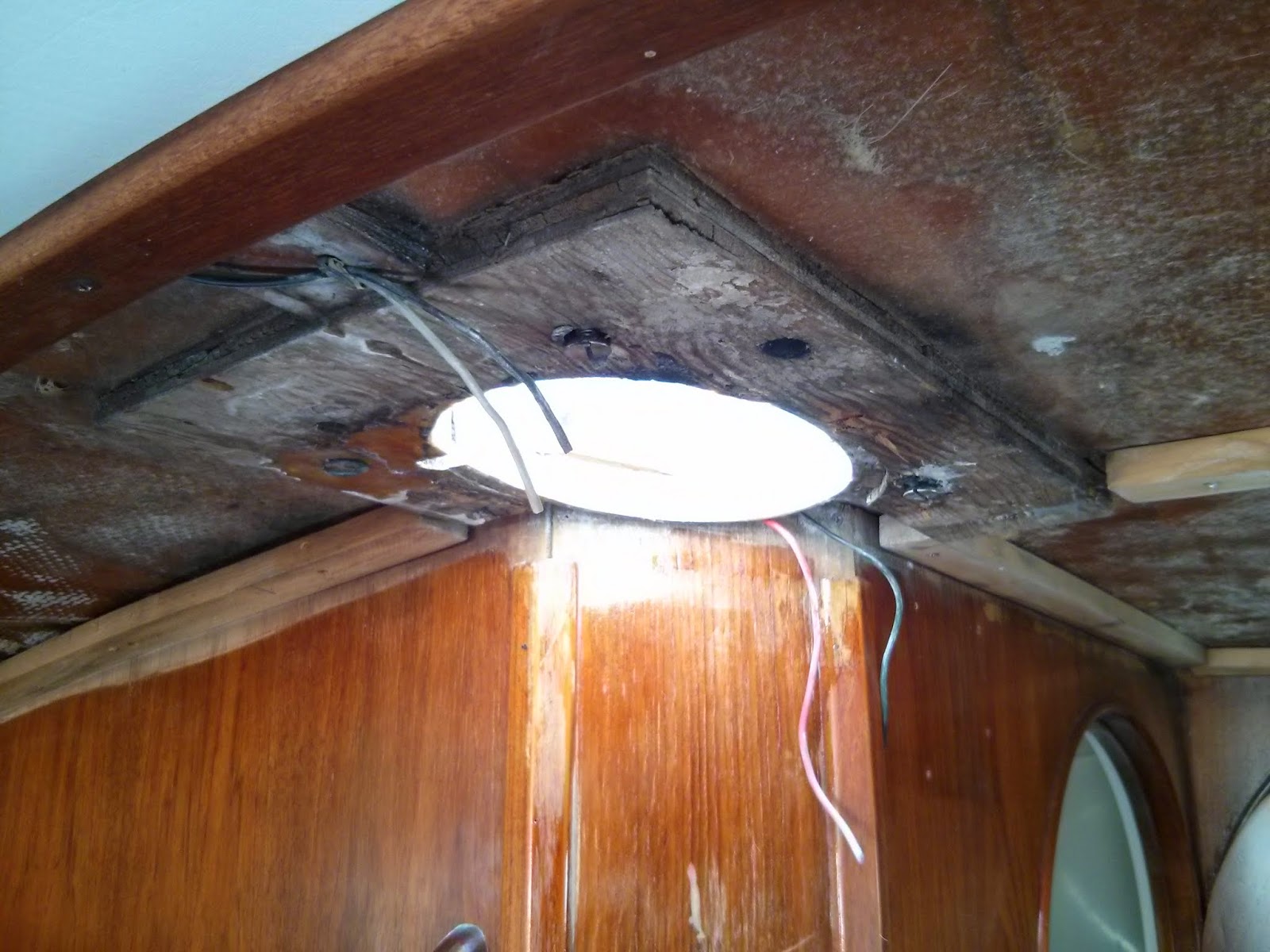There are many design features of Morgan 382, 383, 384
series we find appealing, BUT… The original holding tank set up is not on
that list. The original design utilizes a void in the
lower, aft keel for the black water tank.
 |
| Morgan schematic of original head plumbing. |
Thus waste must be pumped from the head under the port salon
seat, under the galley counter to a PVC pipe inlet that deposits the waste under the
floor of the bilge. To exit the vessel
said waste must then be pumped back up out of the bilge to a "Y" valve in the wet
locker on the starboard side. From this
valve the waste is either discharged overboard via a thru-hull fitting or pumped
out via a deck fitting. Ready for the
icing on the cake? The deck pump out
fitting is located directly above the electrical panel. WTF?
With all the other refit projects on Pilgrim, we may have
been able to live with the black water set up
in an effort to expedite our return to the water (who am I kidding?),
but we discovered that the bilge water was leaking down into the holding tank
below. If the bilge water could find its way down, then odors and, in the case
of a full holding tank, waste could find its way up. This system had to go.
We are installing a 15G, plastic Todd tank under the counter
in the head.
Pro:
- All black water associated plumbing is confined to the head.
- The length of 1 ½” sanitation hose required for the head plumbing is dramatically reduced.
- The holding tank is located above the waterline.
- The black water system requires one less thru-hull below the waterline.All the discharge thru hull fittings (black water and sink drains) are now located on to port and all intake fittings are on starboard. Thus decreasing the likelihood of pulling our own waste water back onboard.
- Easy to visually check the level in the holding tank.
Con:
- Reduction in holding tank capacity. On our M34 we lived with the same 15G holding tank and rarely had an issue with capacity.
- Must relocate the waste pump out fitting on deck.
- Holding tank vent line now longer or must relocate vent to head area.
Early on in our refit I removed a large section of the
vertical wall below the head sink. The cut out was sized to allow the tank to
slip into place.
 |
| Test fitting holding tank under head counter in Pilgrim. Tank was harvested from our last vessel a Morgan 34. |
Opening up this wall has proved invaluable in providing
access for tabbing repairs, seacock replacement, plumbing upgrades, and now
holding tank install.
The forward holding tank supports serve multiple functions. They must carry a portion of the weight of the tank, add to
the strength of the had pan, and assist with spreading the weight of the head
pan across a greater section of the hull.
I began by epoxying a section of ¾” marine plywood to the head pan below the cut out. Both clamps and a couple ¼” thru bolts were used to secure
the plywood during the curing. The
section of plywood makes contact with the hull on either side of the opening
directly under the toilet. At the points
of contact I installed 1708 cloth tabbing.
The tabbing covers the plywood and extends across the hull to aft bulkhead.
Supporting the forward, outboard end of the tank required a
short section of cleat be added to partial bulkhead that serves as an
attachment point for the port forward chainplate.
 |
| Multiple layers of plywood and 1708 tabbing along the joint between the head pan and hull. |
The cleat section is both epoxied and bolted to the
bulkhead. As this is the site of the infamous
head pan corner that instigated a recall of the 382’s in the early 80’s, I
chose to add even more tabbing to spread the load on the hull.
The aft support members for the holding tank are all mechanically fastened to the primary bulkhead with #12 SS screws.
 |
| Test fitting the oak cross pieces. |
I utilized a combination of marine plywood, Starboard, and red oak, each serving to their individual strengths.
Finally I epoxied a 2” strip of ¾” marine plywood around the
perimeter of the opening cut in the head pan.
This was done to provide a solid anchor point for whatever facade we
design to cover the opening.
 |
| After hours of working on multiple projects under the head sink it is gratifying to apply a top coat of paint to the area. |
With the fiberglass work complete we were finally able to
paint the area under the head counter.
Starboard chocks installed along the bulkhead and cross braces will hold the tank in place.
Additional
chocks and straps will be added once we complete the plumbing.
 |
| Tank in place. Time to figure out the plumbing. |
Next step… figure out the plumbing runs.
Additional images and notes can be found in our Holding
Tank Install photo album.












































